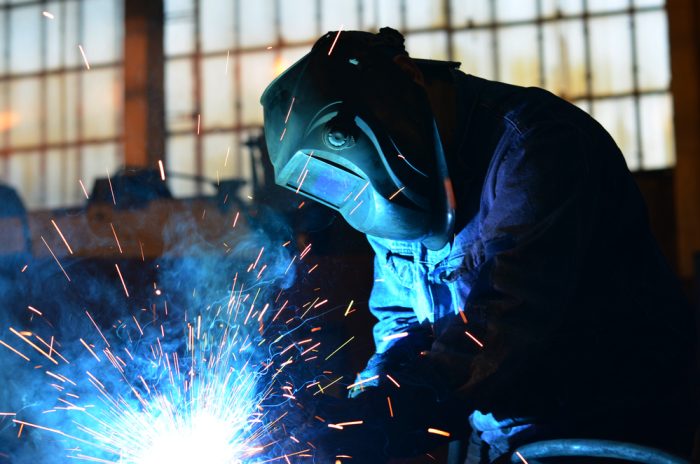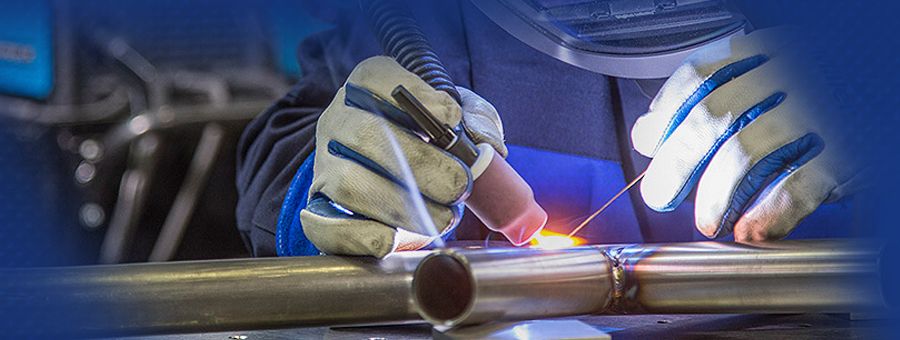Everything about Welding: Secret Insights Into Techniques and Ideal Practices for Success
Welding incorporates a variety of methods, each suited for particular materials and applications. Comprehending these techniques, such as GMAW, SMAW, and TIG, is crucial for attaining perfect outcomes. Moreover, the ideal devices and safety and security practices can not be overlooked. As prep work and repairing play critical functions in the welding process, grasping these elements can greatly boost the quality of the last product. What are the crucial elements that assure an effective weld?
Understanding Various Welding Strategies
Welding methods include a selection of techniques, each fit to details applications and materials. Among one of the most usual techniques are Gas Metal Arc Welding (GMAW), Protected Metal Arc Welding (SMAW), and Tungsten Inert Gas Welding (TIG) GMAW, also referred to as MIG welding, is prominent for its speed and adaptability, making it perfect for thin materials. SMAW, or stick welding, is preferred for its simpleness and performance in exterior settings, particularly with thicker metals. TIG welding uses precision and control, making it appropriate for detailed work and non-ferrous metals (Montana Mobile Welding and Repair Belgrade Welding). Each technique has its unique benefits and considerations, permitting welders to pick the very best technique based upon the project's demands, product type, and desired outcomes. Understanding these methods is necessary for effective welding
Important Welding Equipment and Devices
While different welding strategies require certain skills, the best equipment and tools are similarly vital for attaining quality results. Necessary welding devices includes welding machines, which vary relying on the technique-- such as MIG, TIG, or stick welding. Protective gear, consisting of aprons, gloves, and helmets, guarantees safety and security and comfort throughout the process. Furthermore, clamps and components aid safeguard materials in position, making sure accuracy in welds. Consumables like welding rods, wire, and securing gas are also vital elements that affect the top quality of the weld. Devices such as grinders and cutters help with surface area preparation and post-weld completing, adding to a professional end result. Buying high-grade equipment eventually boosts the effectiveness and efficiency of welding jobs.
Safety Practices in Welding
Correct safety and security methods are necessary in the welding sector to safeguard employees from possible threats. Welders should put on proper individual safety tools (PPE), including helmets with appropriate shading, handwear covers, and flame-resistant apparel. Adequate air flow is vital to decrease exposure to harmful fumes and gases produced throughout the welding process. Furthermore, workers must be learnt the proper handling of welding devices to stop accidents. Fire safety steps, such as maintaining flammable products away from the welding area and having fire extinguishers conveniently available, are necessary. Routine examinations of tools and offices can aid recognize possible dangers prior to they bring about crashes. By sticking to these safety and security techniques, welders can develop a more secure working environment and lessen risks connected with their trade.
Readying Materials for Welding
Preparing products for welding is a crucial action that considerably affects the high quality and integrity of the end product (Montana Mobile Welding and Repair Belgrade). Appropriate preparation entails cleaning the surface areas to get rid of contaminants such as dirt, oil, and corrosion, which can endanger the weld. Strategies such as grinding, fining sand, or making use of solvents are frequently employed to accomplish a clean surface area. In addition, making certain that the products mesh comfortably is important; gaps can result in weak welds. It's also vital to take into consideration the placement and positioning of the components, as this will certainly impact the convenience of welding and the last result. Selecting the proper filler product and making certain compatibility with the base steels is vital for accomplishing strong, sturdy welds.
Tips for Getting High-Quality Welds
Achieving high-quality welds needs attention to information and adherence to best practices throughout the welding process. Proper joint preparation is necessary, guaranteeing surfaces are totally free and clean from pollutants. Selecting the ideal filler product and welding method based upon the base metals is vital for ideal bonding. Preserving regular traveling speed and angle while welding can advertise and prevent issues uniformity. Furthermore, managing warmth input is crucial; too much warm can bring about bending and deteriorated joints. If essential, routinely checking the welds throughout the procedure allows for prompt changes. Employing proper post-weld therapies, such as cleansing and tension alleviation, can enhance the durability and stability of the weld, ultimately making sure an effective result.
Fixing Typical Welding Issues
Welding usually offers challenges that can impact the high quality and stability of the last item. Typical problems such as porosity, irregular weld beads, and getting too hot can emerge, each needing certain fixing techniques. Recognizing these issues is important for welders to improve their skills and accomplish excellent results.
Porosity Issues Described
Porosity can frequently be overlooked, it remains a vital problem in welding that can endanger the stability of a dewalt welding table completed item. Porosity describes the visibility of little gas pockets within the weld bead, which can deteriorate the joint and lead to early failing. This issue normally arises from impurities, dampness, or inappropriate shielding gas insurance coverage throughout the welding process. To mitigate porosity, welders need to confirm that the base materials are completely dry and clean, use suitable shielding gases, and maintain consistent welding specifications. Routinely evaluating the tools and environment can likewise aid determine potential issues before they manifest in the weld. Attending to porosity successfully is vital for achieving strong, long lasting welds that satisfy high quality standards.

Irregular Weld Beans
Irregular weld grains can greatly impact the quality and stamina of an ended up product. Various aspects add to this issue, including improper traveling speed, inaccurate amperage settings, and inconsistent electrode angles. When the welder relocates as well rapidly, a bead may show up narrow and do not have infiltration, while relocating as well gradually can cause excessive build-up. In addition, making use of the wrong amperage can use this link lead to either damaging or too much spatter, both of which compromise weld stability. The welder's method, such as inconsistent lantern motion, can additionally bring about uneven grain look. To alleviate these issues, welders should focus on maintaining stable, regulated movements and making certain appropriate devices setups to achieve uniformity in their welds. Consistency is vital to accomplishing reliable and strong welds.
Overheating and Warping Issues
Too much heat throughout the welding procedure can bring about considerable overheating and warping concerns, impacting the architectural stability of the workpiece. These troubles usually materialize as distortion, which can compromise placement and fit-up, making more setting up testing. Elements contributing to overheating include the choice of welding parameters, such as voltage and travel speed, as well as the kind of product being welded. To reduce these concerns, welders ought to maintain regular traveling rate and appropriate heat input while monitoring the work surface temperature level. Furthermore, preheating or post-weld heat treatment can aid alleviate tensions triggered by fast air conditioning - Belgrade Fabrication. Routine examination and adherence to best methods are important in protecting against overheating and guaranteeing the durability and integrity of welded frameworks
Regularly Asked Inquiries
What Are the Career Opportunities in the Welding Market?
The welding industry uses varied job opportunities, including placements as welders, instructors, inspectors, and engineers. Experts can operate in production, construction, aerospace, and automobile sectors, gaining from strong need and competitive salaries in different this website roles.
Exactly How Can I Improve My Welding Speed Without Sacrificing Top Quality?
To boost welding rate without compromising quality, one need to practice reliable methods, preserve equipment, enhance setups, and boost hand-eye sychronisation. Normal training and seeking comments can likewise substantially contribute to attaining quicker, top quality welds.
What Accreditations Are Offered for Welders?
Countless qualifications exist for welders, consisting of those from the American Welding Culture (AWS), the National Center for Building Education and Research (NCCER), and different industry-specific companies. These credentials enhance employability and demonstrate skill effectiveness.
Just How Does Welding Influence the Residences of Metals?
Welding affects the homes of steels by changing their microstructure, which can bring about changes in solidity, stamina, and ductility. Warmth input and air conditioning rates throughout the process considerably affect these material attributes.
Can I Bonded Dissimilar Metals With Each Other?

Comments on “Reliable fixes for poor fusion from Montana Mobile Welding and Repair”